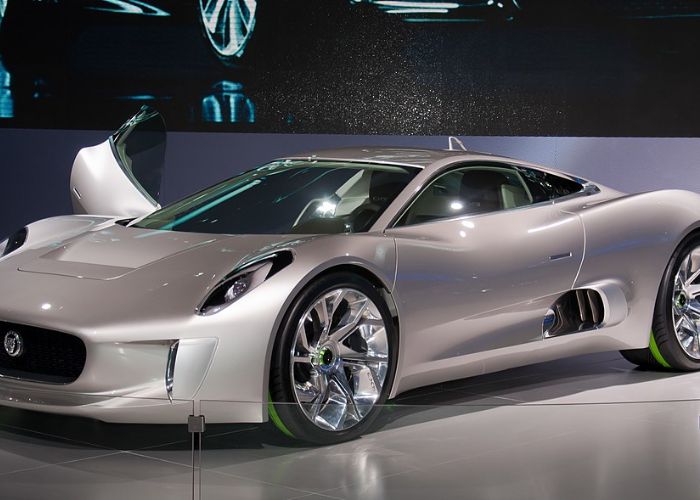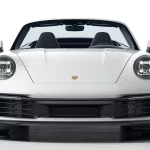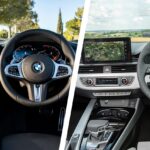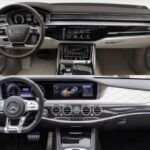Jaguar has set the standard for decades as the epitome of luxury and performance in automobiles. The British manufacturer has been active for almost a century; they originally produced motorcycle sidecars but have since been synonymous with high-quality vehicles across the world. This article goes into the nuances of Jaguar’s automobile design, studying the brand’s design philosophy, historical models, and the innovations that have distinguished its past. Let’s read below “Jaguar Car Design”:-
A Legacy of Elegance
Jaguar’s design philosophy is based on an ongoing quest for improvement. Jaguar cars, from the iconic XK120 of the 1940s to the most modern F-Type, have always fused sporty performance with opulent appearance. Sir William Lyons, co-founder of Jaguar, famously said, “The car is the closest thing we will ever create to something that is alive.” With this notion in mind, Jaguar’s designers have been able to produce vehicles that are works of beauty in their own right.
Jaguar Car Design Evolution through Decades
1940s-1950s: The Birth of Elegance
The XK120 was Jaguar’s first foray into the world of high-performance vehicles and a showcase of the brand’s commitment to traditional design, produced shortly after World War II. The XK120 was instrumental in establishing Jaguar’s visual identity due to its distinctive grille and sweeping front end.
1960s-1970s: The E-Type Phenomenon
The E-Type, introduced by Jaguar in the 1960s, is generally considered the company’s finest design effort. As the legendary Enzo Ferrari once said, “the most beautiful car ever made.” The E-Type’s tall hood, beautiful appearance, and unusual design elements, such as the flip-up headlights, cemented Jaguar’s position as a design powerhouse and became synonymous with the groovy ’60s.
1980s-1990s: Modernizing Tradition
In the second part of the 20th century, Jaguar had to reconcile upgrading their goods with respect for their history and tradition. The XJ Series continued Jaguar’s tradition of luxury and sophistication. Jaguar’s ability to innovate while preserving a refined air was on full show in the early 1990s with the advent of the XJ220, a mid-engined supercar.
2000s-Present: Fusing Performance and Luxury
As a brand that has always taken pleasure in its commitment to style, Jaguar has fully embraced 21st century design trends. The XF and XJ have reinvigorated the brand’s sedan lineup with its cutting-edge features and timelessly elegant designs. With its striking new design and exhilarating performance, the 2013 F-Type brings back the enthusiasm and ingenuity of the original E-Type.
The Design Process: Where Art Meets Engineering
To build a Jaguar, one must strike a delicate balance between unrestrained innovation and meticulous precision. The Director of Design oversees the design team that creates each Jaguar, ensuring that each vehicle not only looks fantastic but also features the most cutting-edge technological innovations.
Sketch to Reality:
Because they allow the designer to quickly try out new ideas and shapes, hand sketches are often the initial stage in the design process. These sketches are like small masterpieces since they represent in exquisite detail what the car may look like. After that, designers can utilize digital tools like 3D modeling to give the ideas a more tangible feel and tweak the proportions and details.
Balance of Form and Function:
Jaguar’s distinctive style stems, in part, from the seamless integration of aesthetics and practicality. The interiors are as fashionable as the exteriors, with a focus on comfort and elegance. The high-end ambience of a Jaguar’s cabin is the product of meticulous design of its materials, color palette, and lighting.
Iconic Features:
Certain aspects of Jaguar cars have become iconic and have endured throughout the years. The “Jaguar face,” as the trademark grille is often called, alludes to the company’s namesake cat. Jaguars are easily recognizable by their signature J-blade headlights, sloping rooflines, and muscular haunches.
Innovations in Jaguar Design
Jaguar has always been ahead of the curve, creating innovative features and designs for automobiles. In the competitive high-end car market, the brand’s defining characteristics are the main selling points.
Aluminum Architecture:
Jaguar pioneered the use of aluminum in the luxury vehicle sector for use in body panels and other lightweight components. As a consequence, not only was fuel efficiency raised, but performance and responsiveness were also strengthened. Since the debut of the XJ in 2003, aluminum construction has been central to Jaguar’s pioneering ethos.
Virtual Windscreen Display:
Jaguar Land Rover introduced the “360 Virtual Urban Windscreen” concept, which utilizes the entire windshield as a screen, to showcase their cutting-edge technology. This augmented reality feature may provide you with information like as instructions, safety alerts, and a transparent view of the road in front of you. This system exemplifies Jaguar’s commitment to incorporate cutting-edge technology without compromising on safety or aesthetics.
Electric Powertrains:
Jaguar has been a leader in the car industry in embracing electric powertrains as the trend toward electrification continues. Jaguar’s I-PACE all-electric SUV is a display of the company’s commitment to a greener tomorrow without losing power or flair. The I-PACE marks a new era for Jaguar with its aerodynamic design and cutting-edge technologies.
The Future of Jaguar Design: Electrification and Beyond
Electrification:
Jaguar has promised to transition to electric vehicles by 2025, and the company hopes to alter the public’s perception of luxury cars in the EV era. Without the limits of an internal combustion engine, designers working on electric Jaguars will be able to explore with new roads of potential.
Autonomous vehicles:
Jaguar is looking on a number of different ways to implement autonomous driving features into its automobiles. Jaguar’s focus has always been on offering a setting where the driver can decide between being actively involved and taking it easy with autonomous driving, without compromising the luxurious and comfortable interiors for which the brand is known.
Conclusion
Jaguar’s journey through the years has been marked by a commitment to style, a passion for speed, and a never-ending quest for technological advancement. From the timeless E-Type to the ground-breaking I-PACE. Jaguar has consistently been a step ahead of the competition when it comes to developing premium vehicles. Jaguar’s design past will continue on even as the business prepares for an electrified and autonomous future. The company’s legacy in the automotive sector will endure for decades. I hope you like reading “Jaguar Car Design”.






